It's been a while since I looked at a ukulele from this brand, so it's good to be looking at Pono once again. This is the Pono MGC Solid Mango Concert Ukulele.
Pono are a much admired 'higher intermediate' level (my categorisation) brand that represent Indonesian made instruments from the Hawaiian based parent company Ko'olau. They were probably the first 'step up to serious' ukulele brand I ever personally acquired and have owned several over the years. All their instruments are solid wood made to the exacting standards of the revered Ko'olau brand and come in a range of scales and finishes from the plain to some more highly decorated models. I don't recall one getting a bad review on Got A Ukulele, but it has been a while and several other brands have appeared with similarly specced instruments for less money since I last looked at one. As Got A Ukulele is time sensitive we shall have to see how this Pono now stands up.
This is a double bout instrument with what I consider to be a more modern shape with a lot of curve around the bouts and is made from all solid wood. In this case it's the first solid mango wood ukulele I have seen from Pono - a tone wood that is rapidly becoming a favourite with many, both for its looks and also the richness of tone. It's certainly the case that in recent years some very high scores have been given by Got A Ukulele to mango instruments. The top back and sides here are all in two pieces and I think that both the wavy grain patterns and overall colour on this example are absolutely wonderful. I would stress, mango is highly variable and I have seen several examples online of the same instrument with much paler wood that are not so much to my taste. This is orangey warm and interesting to look at. This also doesn't display much of that black sooty look that some mango woods can display with only a bit evident on the top in a certain light. I really like the looks here.
The bridge is the usual Pono tie bar made from ebony. It's extremely tidy and the carving is neat and crisp. Sitting in that is a bone straight topped saddle. Spacing here is 45mm. I would prefer the ebony here to be darker though and am not a fan of paler examples.
Decoration here is extremely simple but effective. All you get is a wooden inlay around the sound hole that is both obvious, but yet also blends with the colour of the body wood so as to not be ostentatious. It's extremely neat. The edges of the top and back are not bound but slightly chamfered off for comfort. The whole body is then finished in a smooth satin which is very neat all over the body. Gloss lovers will be pleased to know that the MGCD is available which is identical bar the gloss finish. Personally speaking I think i'd prefer this.
Inside is extremely tidy with no mess I can see. The braces are extremely thin and the linings are notched.
The neck is made from mahogany in an excessive number of pieces - there is a joint at the headstock and two stacks on the heel. It's finished in satin with an ebony heel plate to add a little more interest. It's extremely smooth to hold, but does bring me on to one point about Pono where my views have changed over time. All Pono instruments I have ever looked at have gone with a very standard overly rounded profile and average nut width. And so it is here, with a 35mm nut and 27mm G to A. Now, as I always point out, this is a very personal thing, but over time my move has been away from nuts like this as I prefer either a flatter profile or a wider nut (or even both). It shows how my views have changed as I used to buy Pono instruments and in fact, performed with one for a year - so I clearly CAN play them. But these days the choice is much greater and for me it's now a case of do I WANT to play them? And I am not sure I do. I'm making far more of that than is probably necessary for a uke review - but my readers know what my views are on neck widths and it would be wrong to avoid talking about it here. It's why when you go back some years to my earlier Pono reviews that you will see that I never thought it was such a big deal. Times change though.
Topping that is an ebony fingerboard in great condition. Like the bridge though it's also paler than I would like. It's edge bound in black hiding the ends of the 20 frets which, sadly, are looking rather tarnished to the point of corrosion. That's highly unusual for Pono, but I have to mention it. In all likelihood the blame here is not actually Pono, but the shop selling it for not storing it well enough. It's easily sorted with wire wool, but not right. Position markers are small and subtle facing out at the 5th, 7th, 10th, 12th and 15th and are repeated with dots on the side.
The headstock is the usual subtle Pono shape with an ebony face plate. The Pono logo is inlaid in the top and is a logo I have always thought looks classy.
The tuners are Pono branded open gears in chrome. The gearing system is very good quality, as normal for Pono, but sadly these are tarnished too. Again, easily fixed with some metal polish, but should never have shipped like this.
It doesn't come with anything else bar the Ko'olau branded strings, and has a retail price of around £350. That's pretty reasonable for a Pono.
And it's largely a solid showing here for the brand. I can't find much wrong, but those metalwork issues are highly irritating. Whilst I have pointed out that is more likely the fault of the dealer rather than Pono - (I bought this blind from a high street music store online - I do that quite often to ensure that the reviews are more randomised than just relying on distributors to send me good examples) but, Pono as a brand, needs to be sure their dealers are not sending out instruments that have not been looked after. For me, the dealer is as much part of the 'ukulele brand' as the distributor and maker are. They are the public face and final connection to the player. As such, the fit and finish element of the score gets a chip on the points. (IMPORTANT NOTE - this did NOT come from any of the ukulele stores I recommend and list on this page).
Still, the rest of the build is sound and re-assuring. It's not heavy at 525g and balances well too. The finish also feels great in the hands.
The volume and sustain here are both excellent and it projects with minimal effort on the strumming or plucking hand. This is certainly a lively uke and not a let down in those departments. That's all down to the resonance created by the lightness of the build.
The tone is very much what I expected from a concert in mango too. It's a peppy jangly sound that many concerts display that is more on the soprano rhythmical end of the scale than 'guitar-esque' and is a lot of fun. The mango wood provides a richness to the sound right across the dynamic range in the same way good koa or acacia does. Neither bright nor dark, it's a bit of everything. That jangle comes from the clarity of the individual strings in the mix harmonising together and is a joy. It's a very precise instrument and never sounds muddy or choked.
Fingerpicking is similarly pretty with rich clear notes pinging out of the instrument wherever you play and no volume drop off. This instrument has a beautiful tone I think and excels in whatever style of play you throw at it.
So as is usual for Pono this one does very well indeed. In fact it could have been a stellar review score if it wasn't for the minor snags, which is a shame. Still, this may just be a one off. Do bear in mind the colour variations with mango and try to see what you are getting rather than relying on a stock image though. Tone wise though I think this is wonderful and is very highly recommended!
UKULELE SPECS ROUNDUP
Model: Pono MGC
Scale: Concert
Body: Solid mango
Bridge: Ebony, tie bar
Saddle: Bone
Saddle spacing: 45mm
Finish: Satin
Neck: Mahogany
Fingerboard: Ebony
Frets: 20, 14 to body
Nut: Bone
Nut width: 35mm, 27mm G to A
Tuners: Pono branded open chrome gears
Strings: Ko'olau
Weight: 525g
Country of origin: Indonesia
Price: £350
UKULELE PROS
Great wood look
Sound instrument build
Great finish
Very good volume and sustain
Clear rich tone
Good price for a Pono
UKULELE CONS
Scruffy metalwork
Would prefer darker ebony
Nut width / profile not for me
UKULELE SCORES
Looks 9 out of 10
Fit and finish: 8.5 out of 10
Sound - 9 out of 10
Value for money - 9 out of 10
OVERALL UKULELE SCORE - 8.9 out of 10
UKULELE VIDEO REVIEW
GOT A UKULELE IS NOT PAID BY BRANDS OR SHOPS - YOUR KIND DONATIONS ARE WHAT KEEP THE SITE GOING! THANKS FOR YOUR HELP!
BUY ME A BEER!
BECOME A GOT A UKULELE PATREON
OR
THANKS!
BUY ME A BEER!
BECOME A GOT A UKULELE PATREON
OR
THANKS!


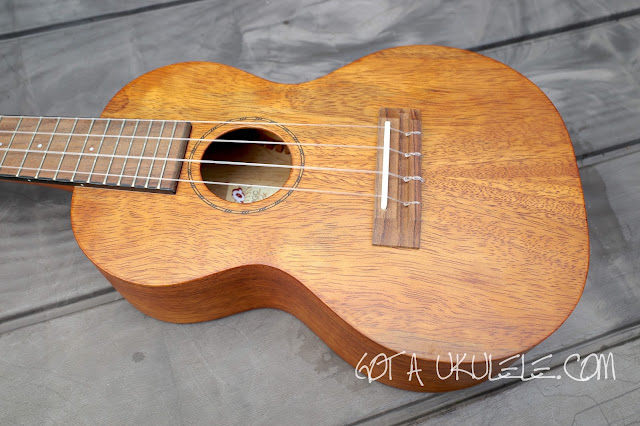
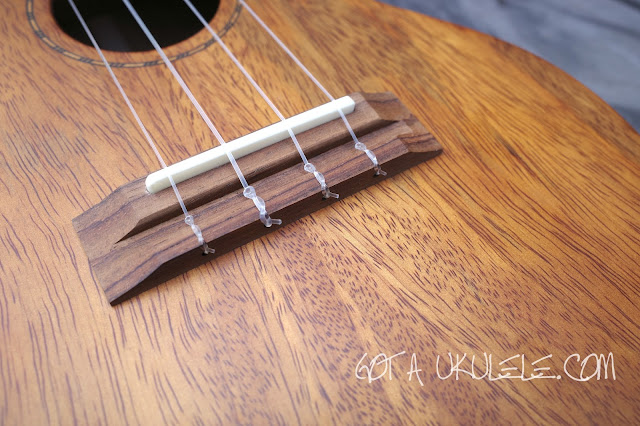
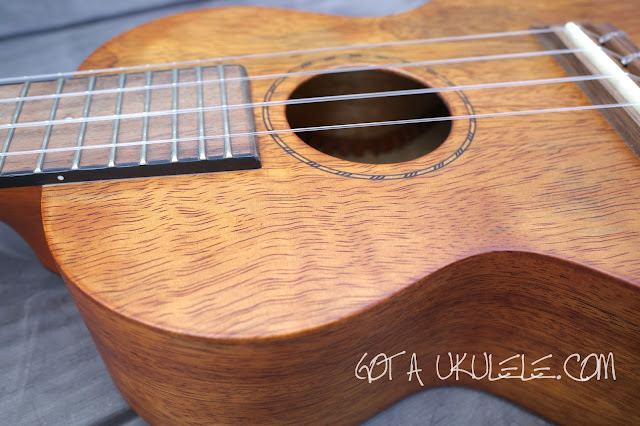
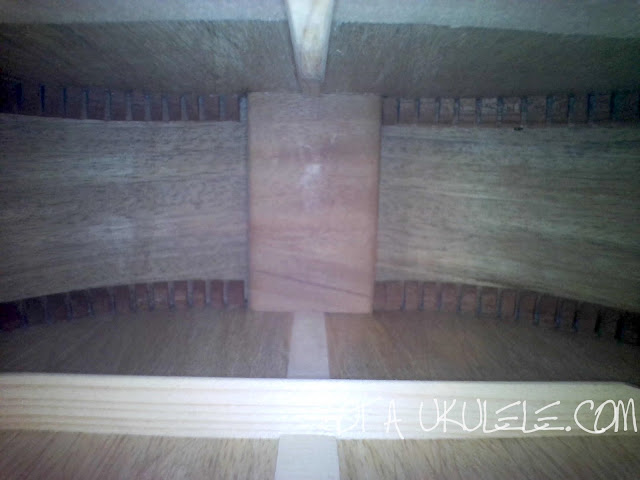

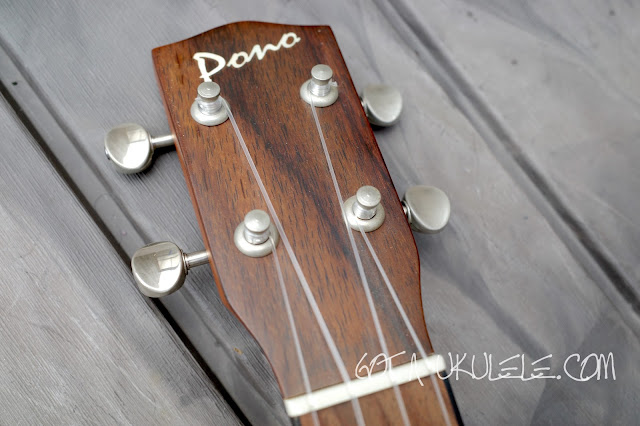



I've never seen a newer Pono with such a light bridge and fretboard (and headstock facing). Wondering if it may be older stock (given the tarnished bits) and where this came from (shop).
ReplyDeletePossibly - but pic on the Duke of Uke store site (not where it came from) also has a very light bridge
DeleteThat site seems to use a lot of stock photos. For a look at more recent stock, I'd go to The Ukulele Site, where they have pics of every ukulele sold.
DeleteMy recently purchased Pono had a lighter shade of ebony. After applying a quality fretboard oil to the board and bridge it darkened up a bit.
DeleteI have a Pono mango baritone with steel strings with a beautiful tone to it. Thanks for this review.
ReplyDeleteWas the fingerboard radiused?
ReplyDeleteNot on this one
DeleteHolding Pono responsible for the less-than-stellar appearance of the metalwork because of an end dealer thousands of salt water miles and numerous storage months away from the point and time of manufacture is to me a bit of a stretch. Knocking off 1/2 point, not 1-1/2 ponts, for Fit & Finish might be more appropriate. Happy New Year!!!
ReplyDeleteA brand is responsible for its dealers. The dealer is part of the 'team' and the last link in the chain. If you choose good dealers this stuff wouldn't be on sale - instead they tarnish their rep by not doing so. Some brands, like Kamaka, take their dealer choice incredibly seriously for that very reason.
DeleteI DID knock half a point off, not one and a half. It was already down to a 9 because of the narrow nut / chunky neck and pale ebony.
Was this shady dealer selling NOS goods as brand new ever contacted? Be interesting to hear what they say about it.
ReplyDeleteAfter carefully reading this review, in Feb. '23 I purchased the Pono Solid Mango Concert Ukulele. Based on Barry's review, I bought from The Ukulele Site, a highly reputable online dealer who shows you a photo of the exact ukulele you're going to buy.
ReplyDeleteNow to address some of the valid concerns that Barry raises in the review. I have big hands and worried about the width of the nut, but it didn't bother me as much as I had expected, probably because my other main uke is a Martin soprano with exactly the same width nut. I was also concerned about appearance, so I bought from The Ukulele Site so I could see exactly what I was going to get. I wound up with an attractive uke with dark ebony on the fingerboard and no problems with metalwork. As Barry notes, the neck is a bit chunky -- significantly more than my Martin soprano -- but after playing it for a year I no longer even notice, probably because the uke just so darned playable in every other respect.
I'll add a couple of things that aren't in the review. First, it's obvious that this is a factory-made uke with CNC-made parts. It doesn't have the character, the "soul," of the hand-made ukes I've played (but that's what you get at this price point -- I paid US$399, less than a Fluke). Secondly, this is a sturdy uke. I do a lot of music with kids. I'd never bring a hand-made uke to a kid's music gig, but I have no such worries with this sturdy little uke.
One thing that bugged me at first was the sound. At first, I felt the tone was a bit tight and the volume was lower than I had hoped for (not as loud as my Martin soprano). However, all-wood ukes can take a while for the sound to open out. Now a year later, having played it several hours each week, the tone is definitely fuller and I feel the instrument is more responsive. FWIW, I did trade out the stock strings with Worth fluorocarbon.
A couple of final comments, after having played this uke intensively for a year. As Barry says, it sounds fine both strummed and fingerpicked; I can add that even flatpicked solos sound full and rich. I've also found this uke to stand out in a variety of settings. I play it outdoors to lead music with kids, and it's loud enough to do that without amplification. It can also handle mellow acoustic jam sessions in a small room with just a couple of other people.
After a year of playing it, this has become my go-to uke. It has great sound, it's sturdy, and it's just so darned playable. I still love my Martin soprano. I still love to borrow hand-made ukes from my friends. But this is now my work-horse uke. It may not be for everyone -- read Barry's review, and see why -- but it has turned out to be a good purchase for me.